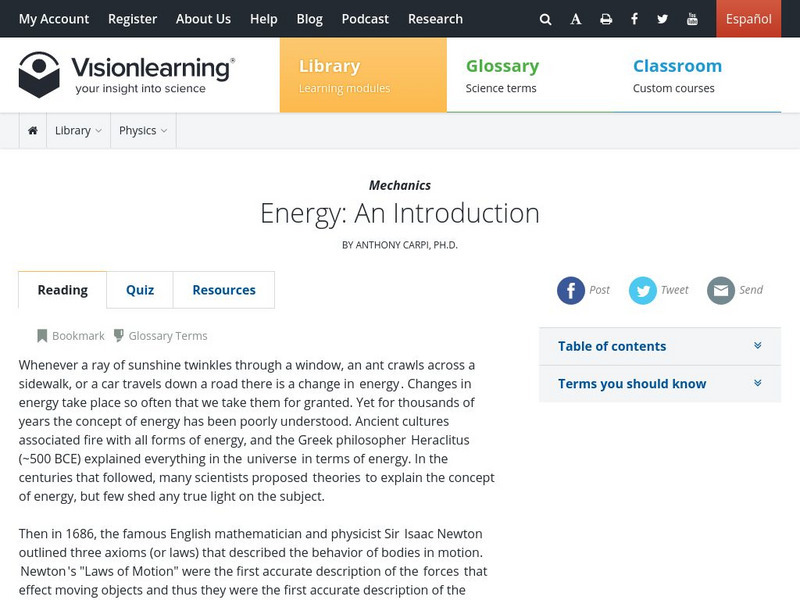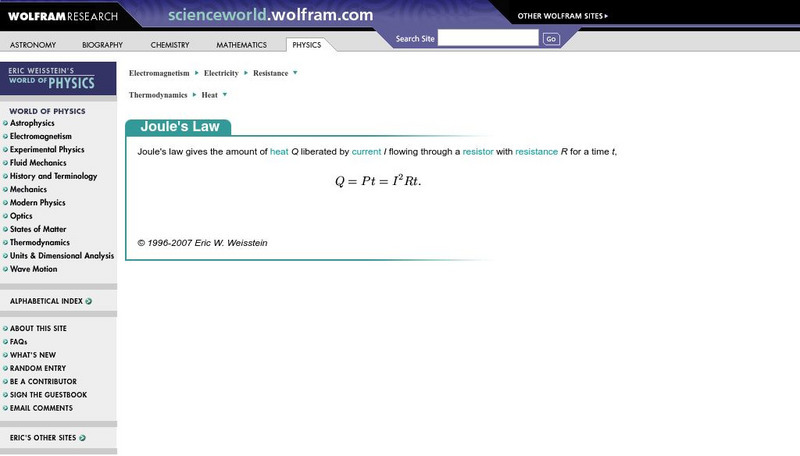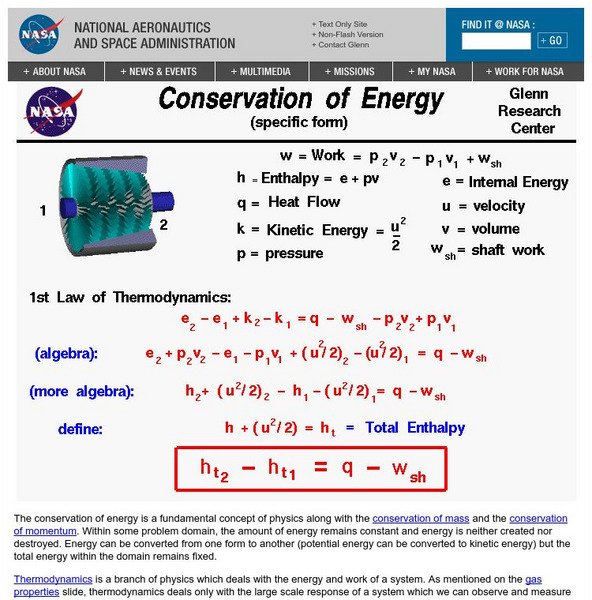National High Magnetic Field Laboratory
Magnet Academy: James Joule
James Prescott Joule experimented with engines, electricity and heat throughout his life. Joule's findings resulted in his development of the mechanical theory of heat and Joule's law, which quantitatively describes the rate at which...
University of Waterloo (Canada)
University of Waterloo: James Prescott Joule
Lists the most important scientific contributions of James Prescott Joule. Provides some biographical details. Part of a set of History of Thermodynamics course notes.
Vision Learning
Visionlearning: General Science: Energy: An Introduction
Instructional module focusing on energy. Discussion includes forms of energy, conservation of energy, and the laws of thermodynamics. Site also includes an interactive practice quiz and links relating to the topic.
Wolfram Research
Wolfram Science World: Joule's Law
This site briefly defines Joule's Law. A formula is provided and links to related terms.
Wikimedia
Wikipedia: James Prescott Joule
Wikipedia offers a biographical sketch of James Prescott Joule discusses his contributions to the world of science, including the conservation of energy.
Sophia Learning
Sophia: Sciences: Work
This resource gives the definition of work and explains how work is related to force and distance. Also explains the units used to measure work and how it is calculated.
Ducksters
Ducksters: Physics for Kids: Kinetic Energy
Kids learn about kinetic energy in the science of physics. The energy of motion can be calculated using mass and velocity. The standard unit is the joule. How it is different from potential energy.
Ducksters
Ducksters: Physics for Kids: Potential Energy
Kids learn about potential energy in the science of physics. The energy of position and state can be calculated using mass, gravity, and height. The standard unit is the joule. How it is different from kinetic energy.
Ducksters
Ducksters: Physics for Kids: Energy
Kids learn about the science behind Energy including its different forms such as chemical, electrical, heat, and gravitational. When is energy considered renewable or nonrenewable?
Khan Academy
Khan Academy: Heat and Temperature
An explanation of using heat capacity to calculate heat.
NASA
Glenn Research Center: Conservation of Energy
From the Glenn Research Center at NASA, read about the law of conservation of energy. Included are formulas and many links to key terms.
Victorian Web
Victorian Web: Conservation of Energy and Thermodynamics
This site is about the trace of the evolution of historical ideas concerning energy conservation and the laws of thermodynamics.
National High Magnetic Field Laboratory
Magnet Academy: Timeline of Electricity and Magnetism: 1840 1849
The legendary Faraday forges on with his prolific research and the telegraph reaches a milestone when a message is sent between Washington, DC, and Baltimore, MD.














